Projects and Project-Based Learning: What’s the Difference?
- 26 July 2022


In a traditional classroom, students are just expected to listen and respond to a teacher. This way of monotonous teaching will not engrain learning in young minds. However, Project Based Learning (PBL) is much more effective and efficient is Project Based Learning(PBL).
We have a general misconception that project-based learning is when our children build a model of the solar system or windmill, create a model of a habitat, write and present a book report, make a collage, etc – and showcase them at school. These are all examples of school projects that provide the opportunity for some creative expressions of learning for teachers and students. It also allows parents to be involved with the learning, as projects are, oftentimes, completed at home. However, project-based learning is quite different.
I would say that project and PBL are as different as a dessert and a main course. In simple terms, projects offer fun or creative challenge for the student, so it seems like a special treat just like our dessert. Whereas Project-based learning provides the framework for student learning throughout the subject like the main course.
While regular school projects are more the end-product of learning project-based learning also features projects, but the focus is more on the process of learning and learner-peer-content interaction than the end product itself. It includes the following three steps.
The first step is analyzing the facts and drawing inferences from the observations and identifying patterns. This also includes inquiry, which makes learning more interesting. The projects in PBL are used to teach rigorous academic content. Students work together to find an answer to a critical question, such as “How can we impact hunger in our community?” Students become immersed in the question after exploring it for a few weeks or longer, pursuing answers from various angles and using interdisciplinary instruction.
It is a sharing of the inferences and knowledge from the observations and the analysis. It is providing supporting evidence from the conclusions drawn from the experiences. At this juncture, students work in groups, clusters and as partners to share their learning, thus also enhancing their communication skills. The role of the teacher is to put them on a path that deepens their knowledge and builds success in the future.
This is when the students apply their learning in meaningful ways. The PBL project incorporates instruction to meet appropriate academic goals and standards. This practical application help students find the meaning and relevance of a phenomenon, thus furthering the learning journey of a student.
At the end of the PBL project, the students’ work is shared beyond just classmates and teachers. For example, students in a STEM project might create a sustainable redesign for public space and present it to the school community, or a social studies student could research historical and contemporary community heroes and present their findings in a public forum.
Students become deeply engaged in their work when Project Based Learning is used while teaching. They understand how what they learn in school applies to real-life situations. They learn skills that will prepare them for success in college, career, and life.

Hyderabad, Gachibowli

Hyderabad, Bachupally

Visakhapatnam

Mohali
Bengaluru